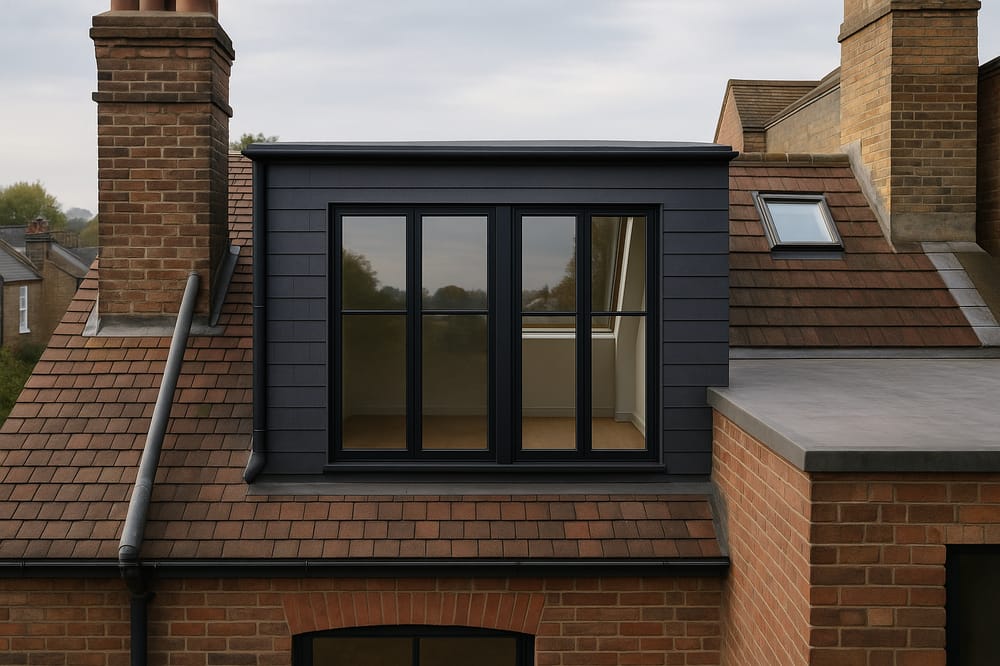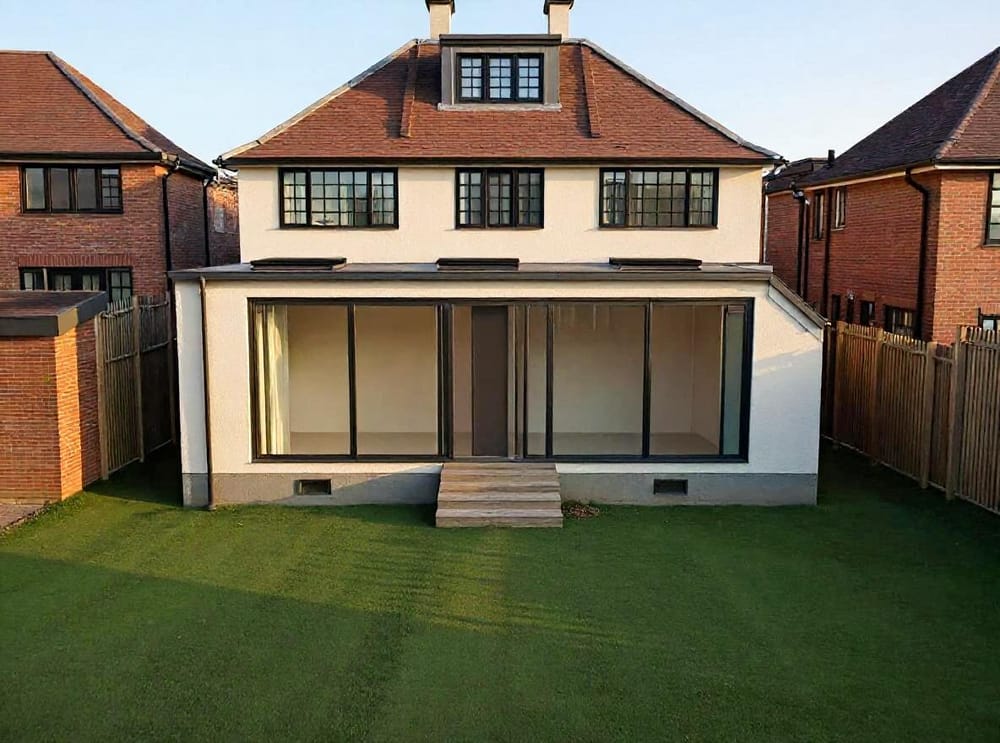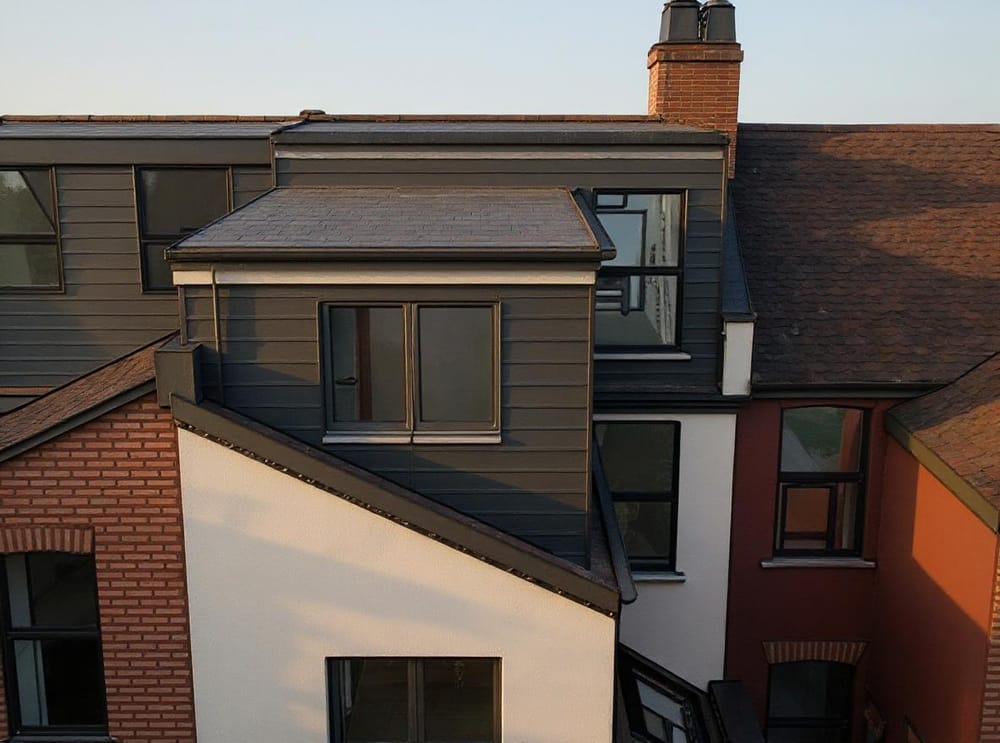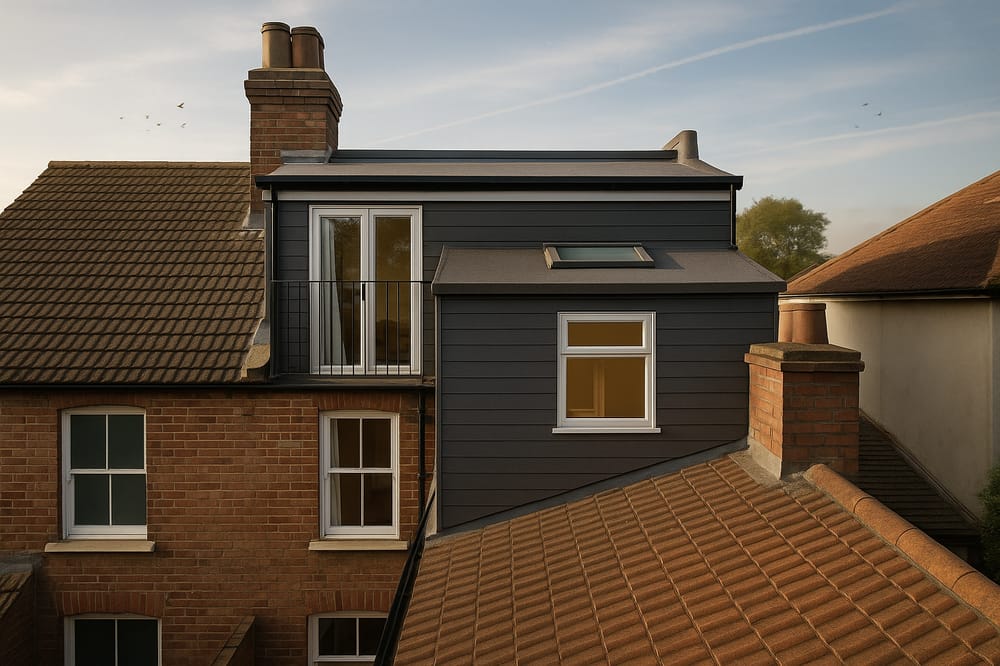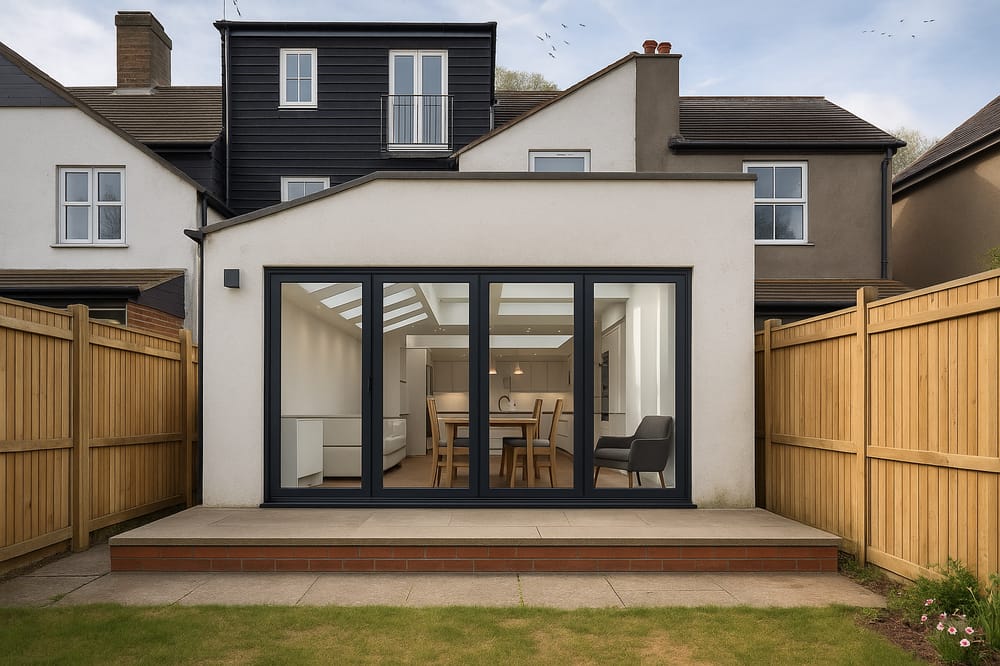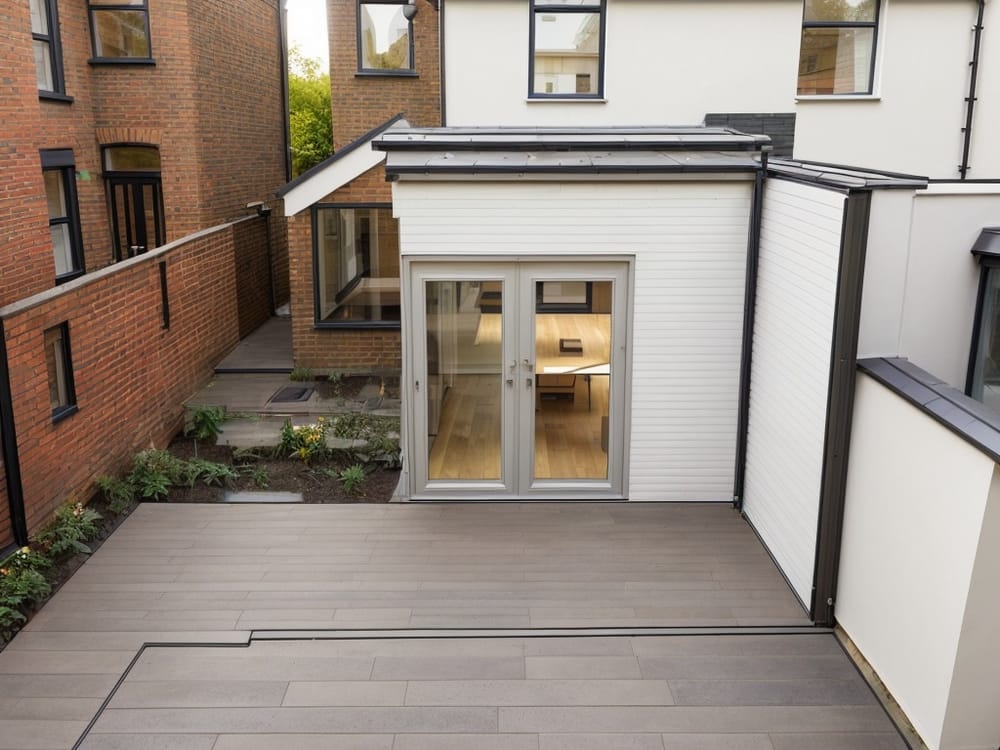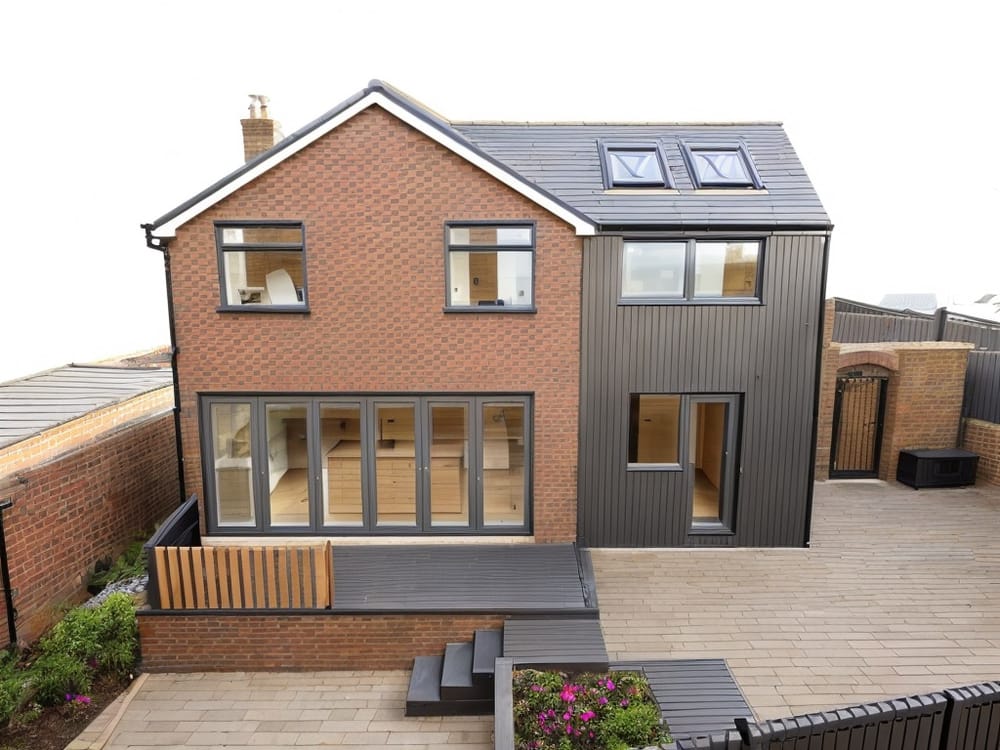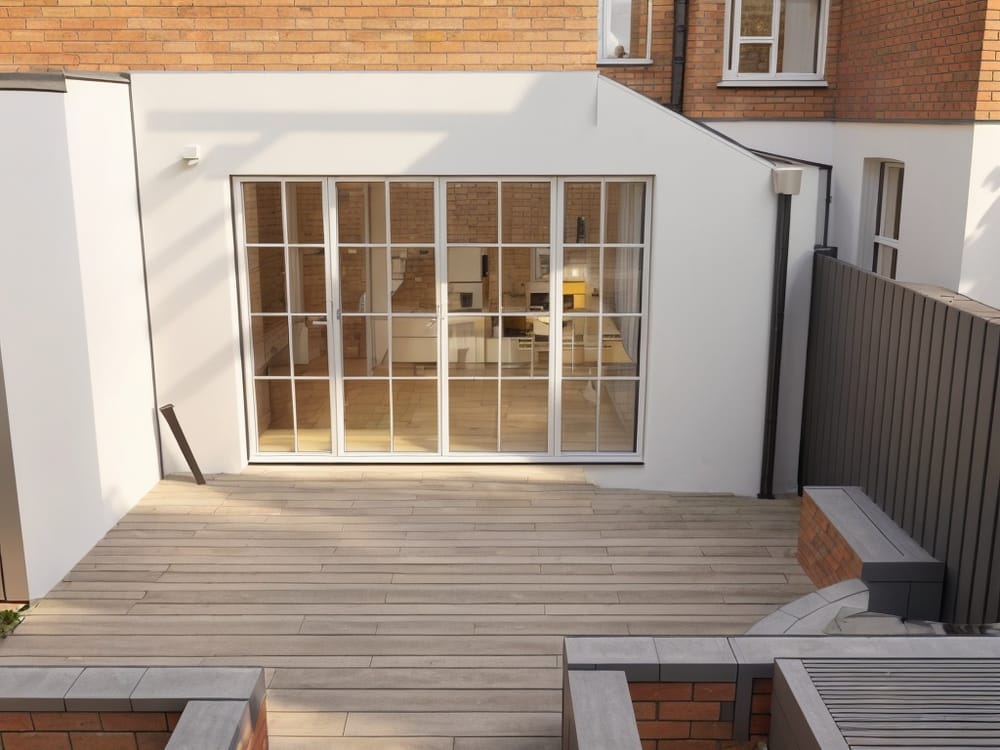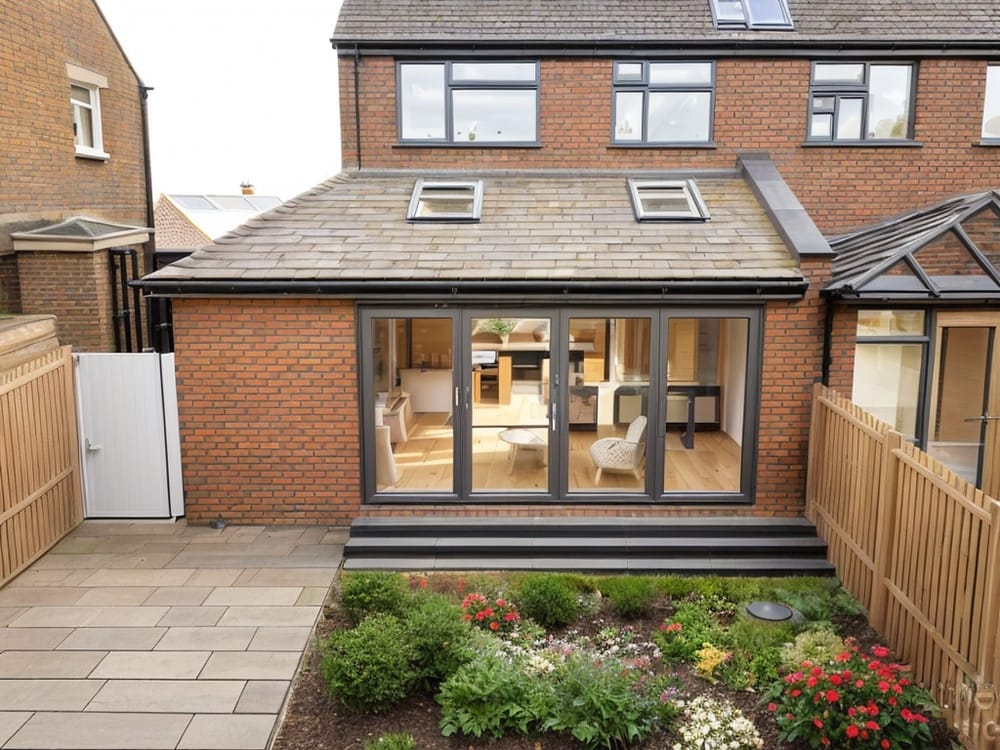Considering extending your home? It's a smart move. With rising costs associated with moving house, including stamp duty and legal fees, many UK homeowners are opting to expand their current properties to gain extra space and boost property value.
But where do you begin? Home extensions involve numerous considerations — from planning permissions and budgets to regulations like party wall agreements. This guide simplifies the process, outlining extension types, costs, financing options, and essential tips to help transform your home efficiently and effectively.
Home extension types
So you know you want to extend. Here are the most popular types of home extensions suitable for different properties.
You can also learn more about the types of house extensions available here.
Rear Extensions: One of the UK's most common choices, typically involving extending at the back of the house to create a spacious, bright kitchen area, often replacing outdated conservatories.
Loft Conversions: Especially popular in space-limited areas like London, loft conversions usually create an extra bedroom, significantly boosting property value.
Side Extensions: Commonly used in older homes with side alleyways, this type of extension expands kitchen space without encroaching into garden areas.
Internal Alterations: Ideal for improving awkward layouts, internal alterations open up spaces or create more structured "broken plan" areas rather than fully open plan.
First Floor Extensions: Less common, these extensions add space to the first floor, typically considered when loft extensions aren't possible.
Basement Extensions: Among the most expensive extension types, basement conversions are popular mainly in affluent boroughs like Chelsea and Kensington, justified by high property values.
Porch Extensions: A modest option occasionally chosen to incorporate porch space into the home, adding slight but useful extra room.
Garden Annex: Ranging from simple summer houses to robust garden studios, these provide versatile spaces like gyms, studios, or home offices, especially useful during warmer months.
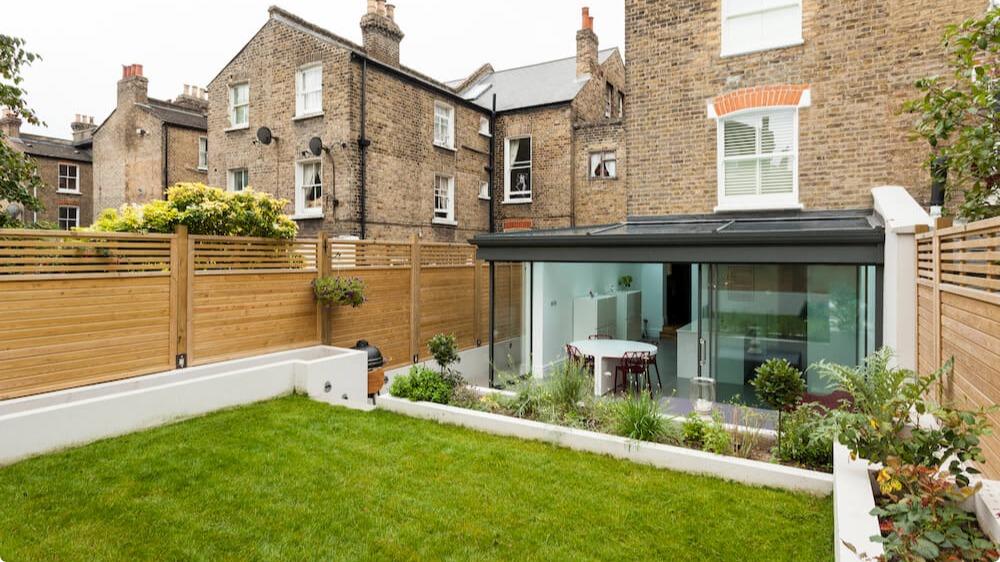
House extensions costs
How much does a home extension cost? Well, it's a bit like asking how long a piece of string is. Extension costs can vary widely, based on factors such as size, location, age of property, and the type of extension you're planning.
As the UK's largest home extension specialist, we collaborate with hundreds of vetted builders and have extensive insight into these costs. Below is a (hopefully) helpful overview based on our experience, but remember: these figures slightly skew towards London projects, and therefore costs outside the capital will typically be a touch lower.
Also, don’t forget to try out our Quick Quote Tool to get an idea of how much your project specifically might cost.
Ground floor extensions
- Your bread and butter Ground floor rear extensions cost on average £80,000
- Ground floor wraparound extensions are usually larger (as they encompass the side of the property) and cost on average £96,000
- Side infill extensions are a little bit cheaper at roughly £74,000
- Ground floor side extensions are usually smaller in scope still, and cost on average £68,000
- You’re typically restricted on what you can do to the street-facing sides of a property and so front extensions are usually smaller, and less common, coming it at about £49,000

Loft conversions
- Loft main dormers cost on average £74,000
- Hip to gable with dormer conversions cost a little bit more, with the median price at £79,000
- Naturally given their nature, L-shaped dormers come in a little bit higher, at £83,500 on average.

Other popular extensions
- Garage conversions are usually simpler projects with a median cost of around £55,000
- Two-storey Rear or Side Extensions: Approximately £125,000 each
- Basement Extensions: Typically £150,000, but often reaching up to £500,000
- Garden Annexes: Around £70,000 for robust structures; simpler summer houses from £10,000-£15,000

A note on build costs
It’s worth bearing in mind that the costs above doesn’t include: VAT, kitchens, new fuse-boards, painting and decorating, bespoke joinery (e.g. architraves), skip and parking permits, windows, doors, bathroom goods, radiators, and the relocation of boilers and hot water tanks.
As you do your research you might also hear about significantly lower extension costs from friends or neighbours who carried out projects several years ago, leading you to wonder if you're being overcharged today. However, this isn't necessarily the case. Build costs across the UK have risen steadily over the past decade – nearly 50% since 2015 – and continue to increase annually by around 3-5%. As a result, quotes today naturally reflect these higher current construction costs, which can differ greatly from the past experiences of your neighbours.
Learn more about the cost of house extensions.
How much money can DIY save you on a home extension?
If you’ve got the skill set, doing things yourself can help save you thousands on a home extension. However, you should be cautious about the risks involved. Mess up a key element of your build, especially anything relating to structure, and the cost of repairs will likely cancel out any savings you made at the time.
Therefore, unless you’re qualified, we recommend you stay away from…
- Roofing
- Plumbing
- Electrics
- Demolition
Learn more about DIY and home extensions here.
7 tips to keep house extension costs down
At Resi, our home improvement experts have plenty of tricks up their sleeves to help you keep costs down.
If you're looking to reign in your budget, consider this advice...
- Make pricing your project as easy as possible with a good measured survey and building regulations package
- Properly assess your contractor quote
- Thoroughly vet your suppliers and specialists
- Consider adding a project manager
- Research your materials
- Think about moving out during construction
- Get the right funding plan
Learn more: 7 tips to keep house extension costs down
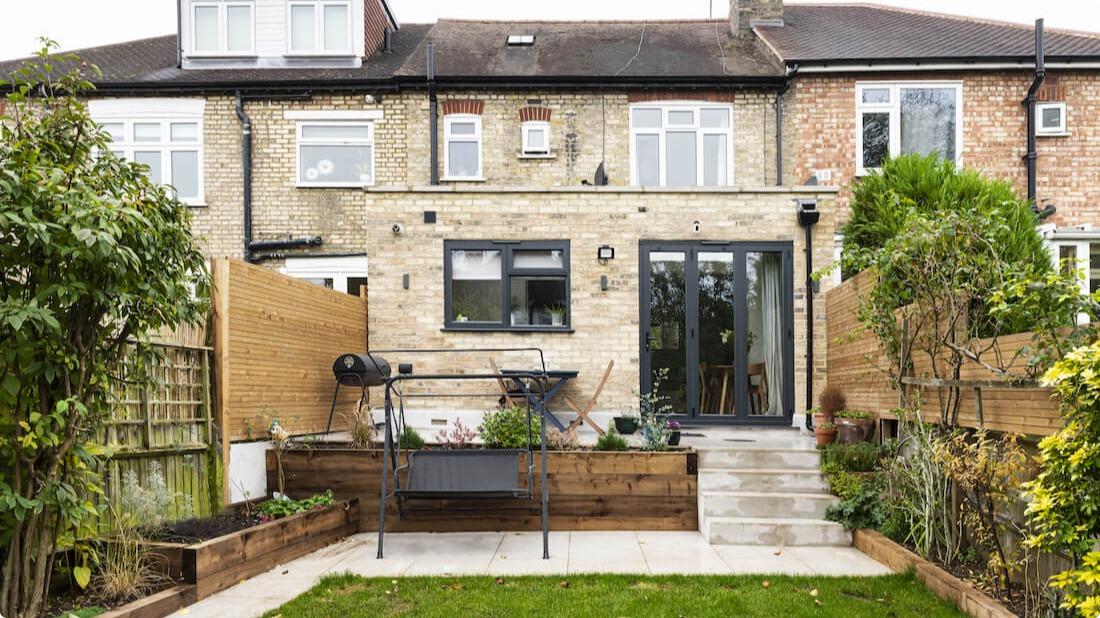
Financing a house extension
When it comes to financing your home extension, many people fail to do their homework and instead rely solely on their savings. But this is just one way of getting your extension off the ground. Make sure you’re also considering these alternatives…
House extension loan
For smaller projects, using an unsecured personal loan could be a good option, depending on the deals available to you at the time. They’re a great option if you’re only looking to cover short-term costs, as they don’t come with set-up fees attached. However, due to the high interest rates, you’ll want to make sure you pay this type of loan back quickly, as well as back sure you borrow less than £30,000.
Learn more about financing your house extension
House extension remortgage
For larger projects - over £30,000 - you might want to consider remortgaging or securing a further advance. This route is very attractive, as it can utilise both the existing and future equity of your home to get you the amount you need. What’s more, it also gives more flexibility than just using savings alone.
Personal savings
The benefits of using personal savings are obvious. With no lender involved, you needn’t worry about interest rates or payment plans. This is very appealing but there are some downsides to this approach. For instance, it can take time to get your savings to where they need to be and, during this time, inflation can go up, taking your project out of reach. Savings are also quite inflexible, putting you in a difficult position if you’re not budgeting a contingency fund at the same time.
Get tailored financial advice with Resi Finance
House extension ideas
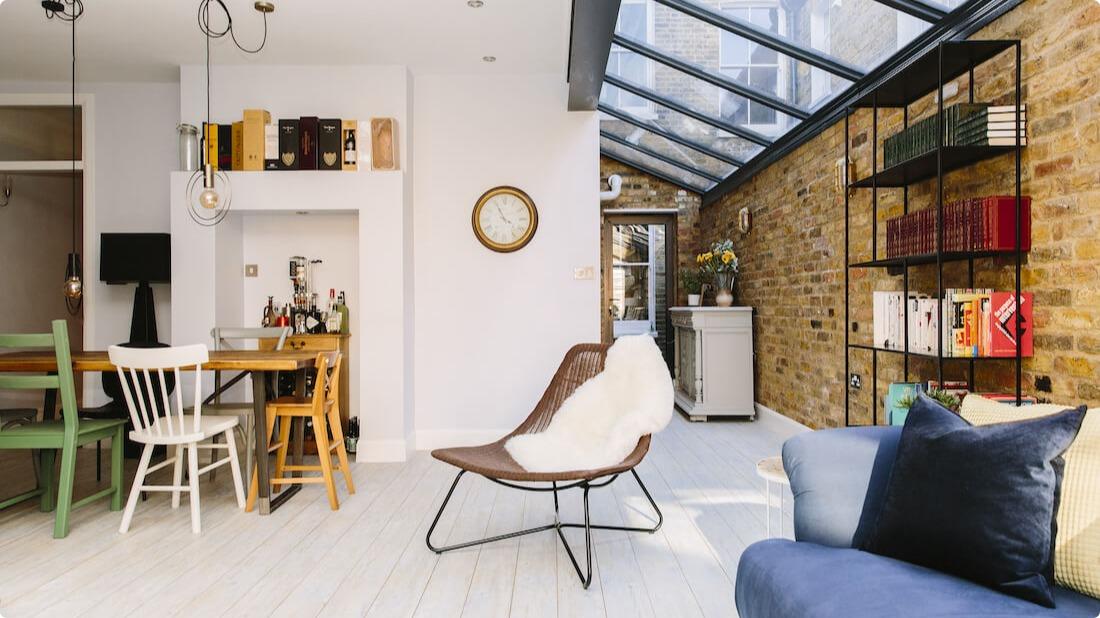
A side home extension in Lambeth
Side extensions are a fantastic way to use up dead space around your property. Typically used to extend older housing stock, a side extension squares off a property with an alleyway present and expands key living areas.
This Lambeth project was completed in 2016, and used the side extension to create a broken plan kitchen/living room - complete with a glass ceiling and exposed brick wall.
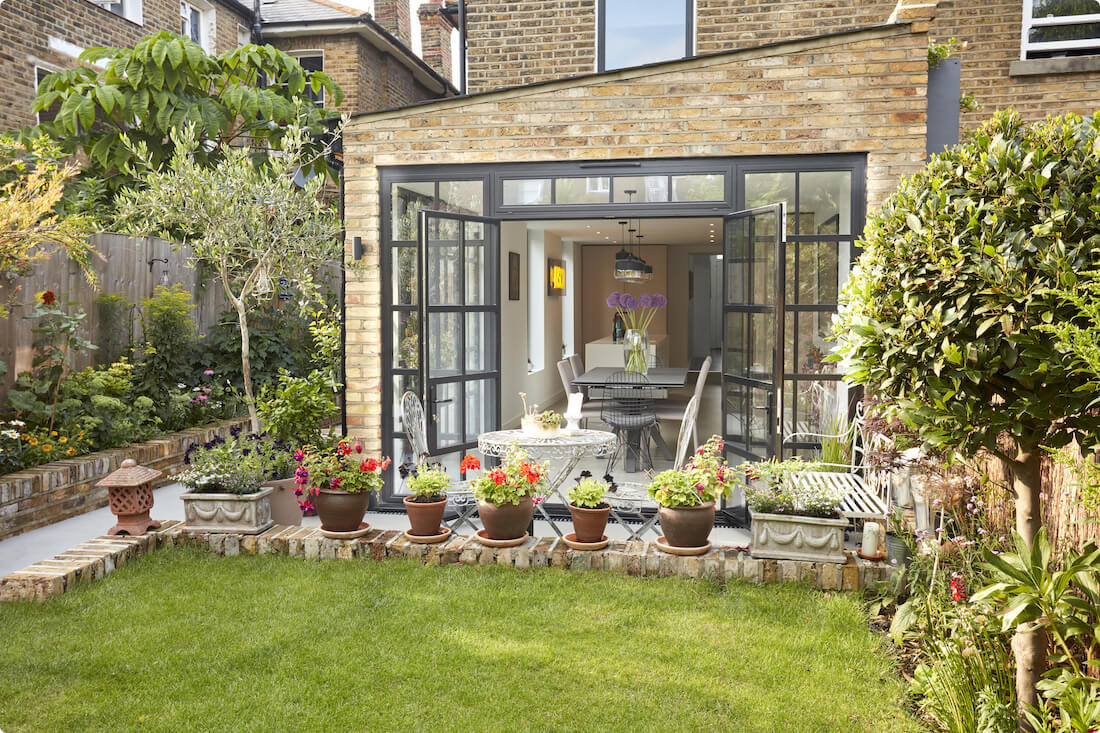
A wraparound house extension in Southwark
Many people assume wraparound extensions have to be a massive undertaking, but as this Southwark project shows, they can be very economical. Rather than losing an entire alleyway or a large chunk of your rear garden, a wraparound allows you to take a little from both - resulting in plenty of space but without the sacrifice!
For this project, we combined the wraparound house extension with a matching brick facade and gorgeous Crittal french doors. This creates not only a beautiful kitchen diner, but leaves space to the side for raised bed and a picturesque view for the living room.
Get more house extension ideas by visiting our portfolio.
Interior design mistakes to avoid in your extension
When you’re focused on your architectural plans and securing planning permission, it might seem like the interior design of your extension is a problem for future you - but no! Trust us, thinking early on how you want the new space to feel and function day to day will help you avoid expensive mistakes and ensure you the space you always dreamt of.
We asked our interior design partners, My Bespoke Room, for the top design mistakes to avoid. First on their list was people not thinking about the final layout of the room and where key items of furniture will be. Problems arise when you move in and realise there’s a radiator where your sofa should be, or a sideboard with no plug socket nearby for a table lamp.
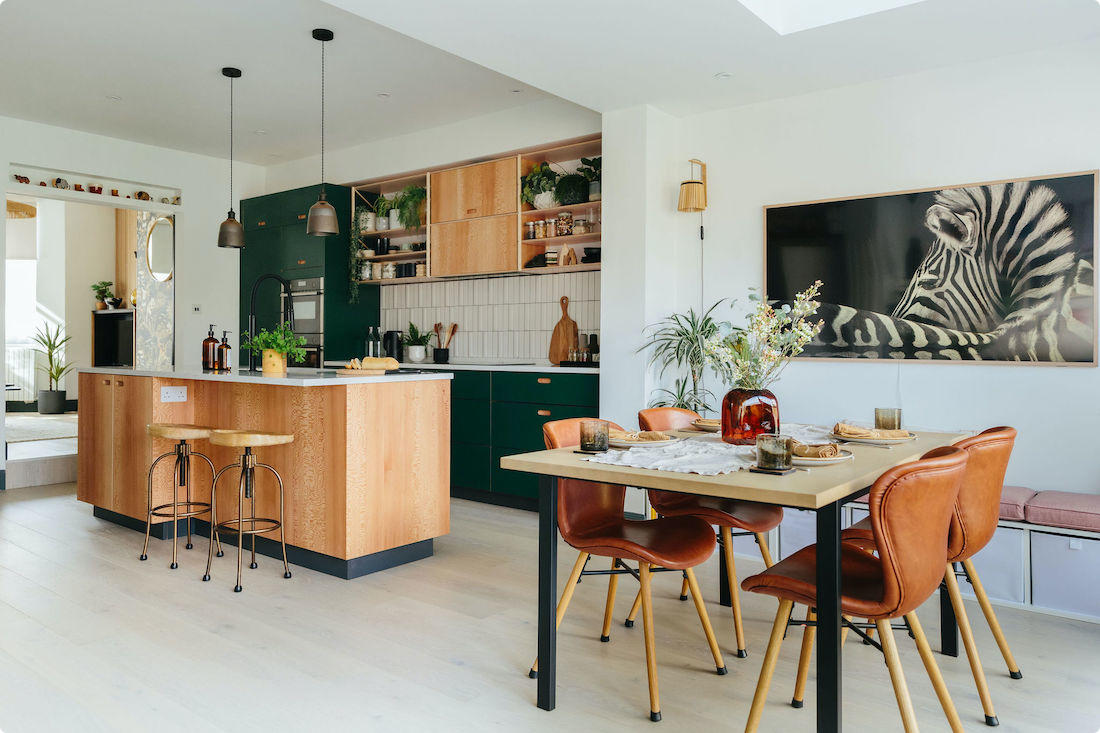
It’s also very common not to think about how the new extension will sit next to the original part of the house. It can be wonderful to have a big ‘wow’ moment as you enter the new space from the old but it’s still important to have a thread that joins them so it’s not completely jarring. You can do this by using the same flooring throughout or by using colours on the walls in the same hue e.g. light pastel colours that are all different but sit happily next to each other.
Another big mistake is not maximising the natural light in your new space. It’s so important to think about where the light will be throughout the day and what times of the day you will use the room. For example, an open plan kitchen, dining room will be in use throughout the day and so you’ll want to maximise light as much as possible. Living rooms however tend to be used in the evenings and so are better placed in parts of your home that aren’t flooded in natural light.
You can avoid expensive mistakes by hiring a professional interior designer from just £195 for their bespoke consultancy service. Book a free chat to discuss your project here.
Environmentally friendly house extensions
More and more homeowners are becoming more environmentally conscious, especially when it comes to their households. With our homes accounting for 27% of the UK’s carbon emissions, there’s no better place to start your eco-friendly journey. And, luckily, there are plenty of ways to make your home extension plans that little bit greener.
How to build an energy efficient house extension
One of the best ways to bring your carbon emissions down is to ensure your home uses energy efficiently. The three areas to focus on in this regard are…
- Lighting
- Heating
- Insulation
Learn more about energy efficient home extensions here
What is the house extension process?
While each house extension is unique, it’s likely you’ll be running through the same list of tasks as your neighbours. Traditionally, this process has felt fragmented and confusing, but with services like Resi, you can sit back and relax, as our team guides you from Point A to Point B.
Get a free quote for Resi’s all-in-one service
Most projects will need to undergo these stages before they reach the construction stage…
- Measured survey
- Proposed design
- Planning permission
- Structural engineer
- Party wall notice
- CCTV surveyor
- Building regulations package
- Putting your project out for tender
- Selecting a contractor
Do you need an architect for a house extension?
You are not legally required to hire an architect.
However, this doesn’t mean you should rule them out. Architects are highly skilled in home design and bring a range of benefits to any project. Some of the most important reasons to consider hiring an architect are…
- Better design
- More added home value
- Expert guidance
- Increased planning success
- Plus more!
Learn more: Do you need an architect for an extension?
House extension drawings
Once you get started with your home extension project, you can quickly get lost in all the talk concerning drawings. What are elevations? Which do you need for planning?
For most projects, you’ll need the following types of construction drawings to get your project through planning and ready for construction…
- Existing drawings
- Design floor plans
- Elevations
- Structural drawings
- Electrical drawings
- Plumbing and sanitary drawings
Lean more about house extensions drawings and plans.
House extension regulations
When it comes to regulations, you better strap yourself in for a long ride. From planning permission to building regulations, structural drawings to party walls, there’s plenty of hoops you’ll need to jump through before you’re legally ready to start construction.
The main regulations you should focus on are…
- Planning permission
- Building regulations
- Party wall matters
What kind of survey do I need for my house extension?
Surveying your property is one of the first steps of any project, and it is often underestimated how important this stage really is. By producing the existing drawings most of your team will use through the course of your project, getting a high-quality survey can make all the difference to both the results and your budget. Afterall, make a mistake here and resolving the error can be costly.
So, what kind of survey will you need? Your options will include…
- Commercial grade laser surveys
- Measured surveys
- Hand-drawn surveys
- Topographic surveys
Learn more: What kind of survey do I need?
House extension without planning permission
Can you build a home extension without planning permission? Yes!
If your project comes under your permitted development rights, you’ll be able to avoid the need for a full planning application. However, this doesn’t mean you’ll be able to escape the planning process entirely. It’s still highly advised you apply for a lawful development certificate, in order to document your project was legal at the point of construction. And, if you plan on building a large rear extension (up to 6m or 8m in length, depending on whether or not your home is detached), then you are legally required to apply for prior approval.
Permitted development rights are great for removing subjectivity from the planning process, but getting the right documentation will take roughly the same time as a full planning application, so if you’re looking to cut down on timings, think again! They also don’t cover all properties and come with strict design guidelines.
Learn more: house extensions you can build without planning permission.
Can I add an extension to a listed building?
Adding an extension to a listed building isn’t impossible, but your options will be limited.
Unlike other properties, you won’t benefit from permitted development rights, so a full planning application will be required. You’ll also need to obtain listed building consent, which will take into consideration:
- History of the building
- Character features
- Measures you’ll take to protect key features
- Size of your extension
- Design of your extension
Learn more about adding an extension to a listed building
Securing party wall agreement for house extensions
If you share a boundary with another household, you may need to secure a party wall agreement – this could be a literal wall or even an outbuilding. Read this article to learn whether you might be required to secure a party wall agreement or book a free call with one of our planning experts.
Explore our guide to how to serve a party wall notice and give yourself the best chance of your work going ahead.









